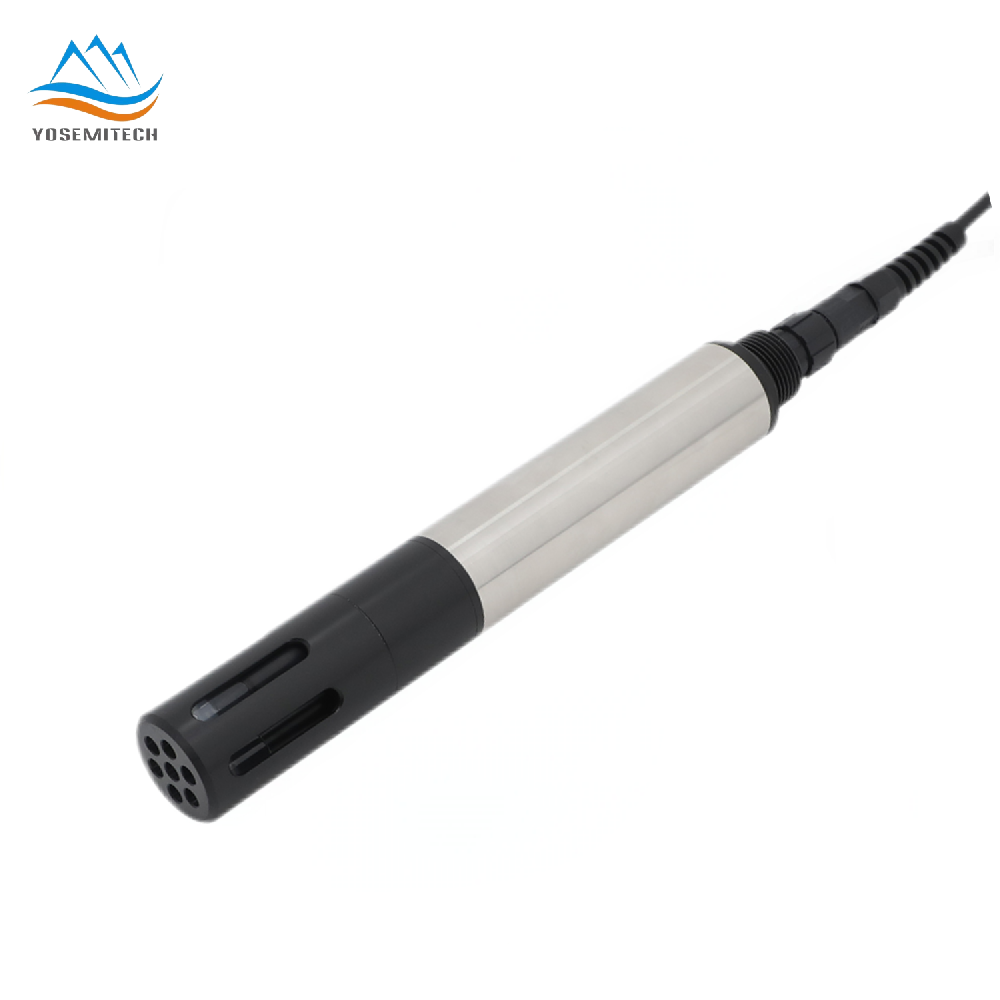NH4-N
Y560-A Self-cleaning Ammonium Sensor
- Product Model:Y560-A
- Time: 2019-09-18 03:57:15
- Product description:Yosemitech Y560-A ISE Ammonium Probe and Sensor provides a quick, simple, and economical solution for ammonium concentration measurement, making it an ideal choice for various applications in water quality monitoring.
Yosemitech Y560-A Self-cleaning Ammonium Sensor measures the concentration of dissolved ammonium as nitrogen (NH4-N) in water. The ISE probe uses pH, Ammonium Ion electrodes, and an optional potassium ion electrode to determine the NH4+-N concentration. It is designed for use in all kinds of natural water, such as lakes, streams, rivers, as well as wastewater plants. The online Ammonium sensor measures ammonium electron concentration without using any chemicals. With an automatic wiper to clean up the electrode sensing surface and easy electrode replacement, Y560-A provides a quick, simple, and economical solution for ammonium concentration measurement.
Monitoring ammonium and ammonia levels is crucial in various environmental and wastewater management applications. In wastewater treatment plants, these measurements ensure that the amount of ammonium/ammonia discharged into rivers is within safe limits, protecting aquatic ecosystems. Furthermore, such monitoring is essential for maintaining the quality of potable water.
-Digital Sensor, RS-485 Output, MODBUS protocol compatible;
-No reagent, no pollutants, more economic and environmentally friendly;
-Automatic compensation for NH4+, pH and temperature in water;
-With a self-cleaning wiper, prevent biofouling to guarantee accurate measurement;
-Cost-effective trending information, simple, accurate calibration
| Name | Ammonium Sensor(with brush) |
| Model | Y560-A |
| Measuring principle | Ion selective electrode |
| Ammonium range | 0-100mg/L or 0-1000mg/L |
| Ammonium accuracy | ±10% or ±0.5mg/L(take the bigger one) |
| Resolution | 0.01mg/L |
| pH range | 4-10 pH |
| Temperature range | 0-50℃ |
| IP range | IP68 |
| Interface | RS-485,MODBUS protocol |
| Power supply | 0.25W(non-wiping) 1W(wiping); DC 9-24V,≥1A |
| Size | Φ64mm * 271mm (with protective cover) |
| Cable length | 10m (default), customizable |
| Calibration | 1-point or 2-point calibration |
| Sensor housing material | POM |
Contact Yosemitech
CATEGORIES
CONTACT US
Yosemitech Technologies Co., Ltd
 +86 19984844080
+86 19984844080
 sales@yosemitech.com
sales@yosemitech.com
 Bldg,25,CECEP Industrial Park, No. 18 Dongchang Rd. Suzhou Industrial Park, Jiangsu Province,China 215126, China
Bldg,25,CECEP Industrial Park, No. 18 Dongchang Rd. Suzhou Industrial Park, Jiangsu Province,China 215126, China


